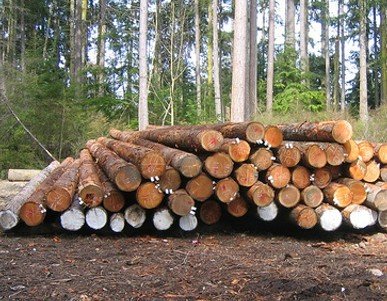
Whether you are planning to build your very own log cabin home or are considering buying one already constructed, there are a few things you will need to know before you purchase your logs. These tips can help you avoid wasting money, and keep you from buying the wrong type of wood.
Planning a log home
Having a log cabin home can be fun and rewarding. It can also be a bit of a minefield. Luckily, a log home consultant can help you turn your dream log home into a reality.
For the uninitiated, building a log home involves a lot more than stacking logs. The key to building a log home is knowing how to select the right logs, properly preparing them for the building process, and how to properly maintain them once the home is constructed.
A log home is also a little more expensive to construct than a traditional home. For example, you may have to pay a premium for the cut logs from a sawmill. Also, you may have to pay more for planning permission for urban log homes.
The most important thing to remember is that building a log home is not as hard as you may think. Most log homes have survived natural disasters, and they are also more durable than traditional homes.
Requirements for cutting logs
Getting a tree service to cut logs for your log cabin home requires more than a good ol’ fashion axe and a truck. Often, this involves more time and money than is strictly necessary. In addition to the usual suspects, you’ll need to find a service that has a good track record and is not prone to frequent misunderstandings. If the service isn’t in your immediate neighborhood, it might be a good idea to enlist the aid of an online referral service. Those services will typically have their own lists of quality companies, so you can rest assured that you’ll be in good hands.
It’s not often that a company can boast of its largest single purchase in years. In order to ensure that they are able to make the best use of their available capital, they will have to make sure that they are paid in a timely fashion. A good rule of thumb is that you should never allow a cutting period longer than 18 months.
Cedar vs. pine logs
Choosing the right logs for your log cabin home can make a big difference. Your choice can determine how your home will stand up to the test of time.
Some of the more common types of logs used are pine, fir, and cedar. Each has their own advantages and disadvantages. The type of wood you choose should be based on your own personal preferences.
If you are building a log home, you should focus on white pine and cedar. These two woods are rot resistant and can withstand a variety of climates. They are also beautiful.
Pine is available in a wide variety of colors. White pine can be stained to resemble Cedar. Cedar is a little more expensive but has a lot of benefits. The chemical composition of Cedar makes it an ideal choice for log homes. It also has a natural ability to repel wood-boring insects.
Cedar is also rot resistant. Cedar can withstand a variety of different climates. It is also one of the most durable construction materials.
Drying time of logs
Whether you are building a log cabin or simply want to make sure the wood you have is ready to use, you need to know how long it takes to dry your logs. The drying process differs for different types of wood. Some may dry out in as little as a few months, while others may take a year or more.
The length of time it takes to dry out your logs depends on the type of wood and the species. Some wood suppliers recommend kiln drying, while others may recommend air drying. The time it takes for your wood to dry will depend on how much moisture it contains and how thick it is.
When it comes to air drying, you will want to ensure that your logs are exposed to air on all sides. You should also use a tarp or a cover to prevent water from getting in. Once your wood has dried out, you will want to bring it indoors to finish the process.
Pest control
Whether you’re harvesting lumber for your log cabin or preparing it for use, pest control is important. Pests such as mice, squirrels, and rats can damage your cabin. If you’re worried about the health of your cabin, it’s best to hire an exterminator to treat your cabin. You should also treat the soil around the logs with a pest control treatment.
You should also inspect your cabin for cracks or holes. These are the most obvious signs of a bug infestation. If you see any holes, seal them with caulking. You can buy caulking from companies that specialize in log cabins. You can also spray wood siding with insect-preventative sealants to keep bugs out.
During harvesting, be sure to check the diameter of your logs. If you’re not sure, walk around your plot of land and check the straightness of the trees. You should also keep your logs away from water. If you are preparing them for use, you should use a tarpaulin to cover them while they dry.